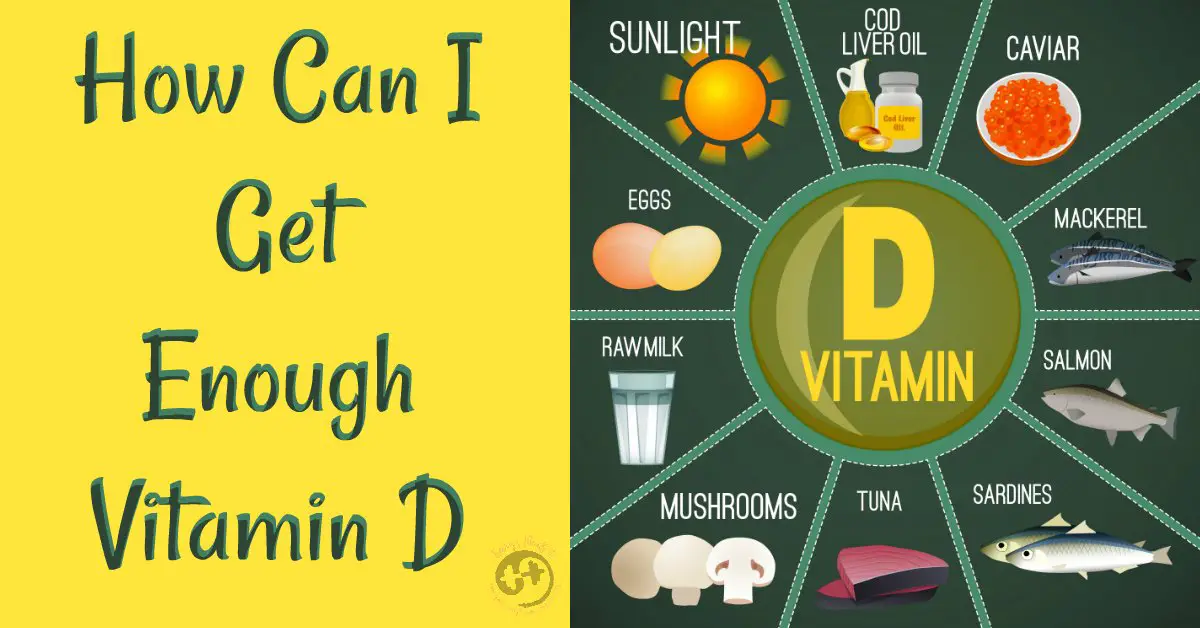What If I Dont Know How To Forage Wild Mushrooms
Since the 1994 landmark study showing the vitamin D benefits of wild mushrooms, recent research has discovered ways to increase the levels of vitamin D in conventionally grown mushrooms. According to four different studies, if you were to take white button mushrooms and place them in the midday sun for 1520 minutes, they would form vitamin D and provide more than 10g/100g, which would give you the recommended daily dose of vitamin D. This of course changes based on the time of year and intensity of the sun. You can also get them to form more vitamin D when they are chopped up and placed gills up as opposed to them remaining whole and gills down. Farmers are also able to expose fresh mushrooms to UV-B light and generate up to 40g/1g of dried mushroom. Yes, that is 1 gram of dried mushroom that would give you 1,600 of the 2,000 IU for your daily recommended dosage if the grower takes the time to expose the mushrooms to the proper UV light!
Diabetes And Weight Loss Support
Low levels of vitamin D have been linked to obesity and diabetes. Eliminating a vitamin D deficiency may help manage diabetes symptoms and enhance weight loss efforts.
There are many vitamin D shot benefits, and some people are better positioned to take advantage of them, particularly those who are deficient in vitamin D. The following may contribute to a vitamin D deficiency:
- Lack of sun exposure to naturally produce vitamin D
- Advanced age, as the ability to make vitamin D decreases as we get older
- Fat absorption disorders such as celiac disease or Crohns disease
- Darker skin tones, which dont naturally produce as much vitamin D
Vitamin D Source: Food
Considering the above skin cancer concerns, what is the best way to absorb Vitamin D? Most people can get adequate amounts of Vitamin D from food and nutritional supplements.6
The bad news: only a few foods naturally contain Vitamin D, including the following:7
- Fatty fish and fish liver oils
- Beef liver
- Egg yolks
- Mushrooms
The good news: eating Vitamin D-fortified foods can increase your intake of this nutrient.
Recommended Reading: What Vitamins Does A Woman Over 50 Need
Is It Best To Get Your Vitamin D From The Sun Definitely Not
David J. Leffell, MD, Yale Medicine dermatologist and chief of Dermatologic Surgery
One of the biggest challenges weve faced in dermatology and in the world of skin cancer prevention has been a lot of misinformation about vitamin D metabolism.
There are claims that one needs to get a certain amount of sun exposure every day in order to produce enough vitamin D to be healthy. Its just not true. The majority of people can get their vitamin D from nutritional supplements and from vitamin D-fortified foods.
There are some people who have advocated for tanning to get vitamin D. But we know that UVB light causes skin cancer and that protecting yourself against it makes sense. As a doctor who treats patients who have melanomas, I want the general public to be advised that under no circumstances can use of a tanning bed or tanning in general be justified on the basis of vitamin D. Take a supplement instead.
Vitamin D And Your Health

Vitamin D, nicknamed the sunshine vitamin because your body produces it after sun exposure, has long been known to help build strong bones by increasing the body’s absorption of calcium and phosphorous. But beginning in 2000, research into vitamin D’s role in other health conditions began to expand rapidly.
While there is strong support for vitamin D’s role in bone health, the evidence that it prevents other health conditions is not yet conclusive, says Dr. Manson. “Research on vitamin D and calcium supplementation has been mixed and, especially when it comes to randomized clinical trials, has been generally disappointing to date,” she says.
Dr. Manson was a principal investigator of the recently published Vitamin D and Omega-3 Trial , a large study . The study found that those taking a vitamin D supplement did not lower rates of heart attack, stroke, or cancer. However, among people who later developed cancer, those who took vitamin D supplements for at least two years had a 25% lower chance of dying from their cancer compared with those who received a placebo.
Also Check: What Is The Best Name Brand Vitamins
Healthy Foods That Are High In Vitamin D
We include products we think are useful for our readers. If you buy through links on this page, we may earn a small commission. Heres our process.
Vitamin D is the only nutrient your body produces when exposed to sunlight.
However, up to 50% of the worlds population may not get enough sun, and 40% of U.S. residents are deficient in vitamin D .
This is partly because people spend more time indoors, wear sunblock outside, and eat a Western diet low in good sources of this vitamin.
The recommended daily value is 800 IU of vitamin D per day from foods .
If you dont get enough sunlight, your intake should likely be closer to 1,000 IU per day (
Vitamin D Source: Supplements
Besides eating Vitamin D-rich foods, taking a Vitamin D supplement could help you get the recommended amount in a sun-safe manner. Nature Made supplements come in a variety of forms, including tablets, softgels, and gummies. Doctors typically recommend supplements for people with darker skin tones or those with fat absorption issues, lactose intolerance, and milk allergies.6
Also Check: What Vitamins Do I Need After Gastric Bypass
Not Getting Enough Vitamin D
We dont need vitamin D from food or sunlight every day. But if you dont get enough over a longer period of time, you wont have enough vitamin D for good health known as vitamin D deficiency. This is very common in the UK around one in five adults and one in six children dont have enough vitamin D.
Some people are more likely to have a vitamin D deficiency than others. Supplements and eating foods which contain vitamin D can help.
Sun Exposure During Winter Months
The Ultraviolet Index measures the level of ultraviolet radiation. Throughout winter, particularly in the South Island, the UVI is usually less than 3 .
When the UVI is 3 , skin damage occurs after about an hour in those people with sensitive or fair skin. However optimal vitamin D can still be produced in a few minutes if at least the face, arms and legs are exposed.
NIWA provides a year round daily guide of the UV throughout New Zealand.
Recommended Reading: Is Vitamin C Hard On Your Kidneys
Getting More Vitamin D
Sun beds and solariumsSun beds and solariums are not recommended as they increase your risk of melanoma and other skin cancers.
You can get more vitamin D by:
- sensible sun exposure.
- choosing foods that contain vitamin D.
Some people with a high risk of vitamin D deficiency may need to take a vitamin D tablet. Talk to your GP, dietitian or lead maternity carer if youre concerned.
What Are The Health Risks In The Event Of Vitamin D Deficiency
The clinical signs of vitamin D deficiency are:
- muscular disorders: loss of muscle tone, tetany, seizures
- bone disorders: osteomalacia , rickets , which can cause bone and muscle pain and bone deformities. Inadequate vitamin D intake can also lead to a reduction in bone mass and therefore a greater risk of fractures. These risks are particularly high where the level of physical activity is low.
More rarely, a vitamin D deficiency can lead to anaemia.
Recommended Reading: What’s Vitamin D3 Used For
Uv Levels In Victoria
As shown in the table below, from mid-August to April, average UV levels in Victoria are three and above for much of the day. This level of UV increases the risk of overexposure and skin damage, and sun protection is recommended. Using good sun protection should not put people at risk of vitamin D deficiency.From May to mid-August, average UV levels in Victoria are low . During this time, sun protection is not recommended, unless you work outdoors, are near highly reflective surfaces , or are outside for extended periods.
Side Effects Of Too Much Vitamin D

We include products we think are useful for our readers. If you buy through links on this page, we may earn a small commission. Heres our process.
Vitamin D is extremely important for good health.
It plays several roles in keeping your bodys cells healthy and functioning the way they should.
Most people dont get enough vitamin D, so supplements are common.
However, its also possible although rare for this vitamin to build up and reach toxic levels in your body.
This article discusses 6 potential side effects of getting excessive amounts of this important vitamin.
Also Check: How Does Vitamin C Help
Drink Your First Cup Of Coffee Outside
We don’t all have views this great, but drinking your morning beverage outside can still be peaceful .
Take some extra time for yourself in the morning and drink your first cup of coffee outside. Morning light isn’t as harsh as sunlight later in the day, but you can still meet at least some of your vitamin D needs this way.
If you work from home, try doing this before you sit down at your desk . If you work at an office or another workplace, you might have to set your alarm a few minutes earlier to enjoy the morning light.
Before you cringe at the thought of an earlier wake-up time, know that you’ll get more benefits than just the vitamin D absorption.
Carving out time for yourself in the morning, even as little as 10 to 15 minutes, can have a positive impact on your day. You may find yourself looking forward to your early morning coffee because it’s a time for you to slow down, be with your thoughts and set your intentions for the day.
Not All Mushrooms Are The Same
When whole oyster mushrooms were compared side by side with shiitake mushrooms, the oyster mushrooms were able to form more than twice the amount of D2 compared with the shiitake. After 60 minutes of UV-B exposure, the sliced oyster mushrooms measured 140g/g of dried mushroom. It is interesting to note that oyster mushrooms are plentiful in late fall and throughout the winter. These mushrooms alone could give you enough vitamin D for the winter, so long as they are growing outdoors and/or are exposed to light and properly preserved. Watch this video to learn how to identify oyster mushrooms. They are one of the easiest mushrooms to identify in the United States, with no deadly look-alikes. Amazingly, all commonly consumed mushrooms contain pro-vitamin D4, inferring that they can make vitamin D4 should they be exposed to radiation, and shiitake mushrooms contain D2, D3, and D4!
Don’t Miss: How To Know What Vitamins You Need
How Much Vitamin D Do I Need
From about late March/early April to the end of September, the majority of people should be able to make all the vitamin D they need from sunlight on their skin.
Children from the age of 1 year and adults need 10 micrograms of vitamin D a day. This includes pregnant and breastfeeding women, and people at risk of vitamin D deficiency.
Babies up to the age of 1 year need 8.5 to 10 micrograms of vitamin D a day.
A microgram is 1,000 times smaller than a milligram . The word microgram is sometimes written with the Greek symbol followed by the letter g .
Sometimes the amount of vitamin D is expressed as International Units . 1 microgram of vitamin D is equal to 40 IU. So 10 micrograms of vitamin D is equal to 400 IU.
People Most At Risk Of Vitamin D Deficiency
Some people dont have enough vitamin D. This could be because their skin isnt exposed to enough sunlight, or because of health problems or higher needs for vitamin D.
For example, if:
- you dont go outdoors often, for example if you are housebound, in hospital or are disabled and less able to get about
- you wear clothes which cover most of your skin when you go outside
- you have dark skin, for example if youre from an African, African-Caribbean or south Asian background as you need more sunlight to make enough vitamin D
- you wear sunscreen most or all of the time
- you need more vitamin D, babies, young children and pregnant and breastfeeding women need more vitamin D
- you are an older adult, as older people cant make as much vitamin D
- you have a health problem or youre taking certain medications which change the way vitamin D is controlled in the body, such as Crohns disease, coeliac disease, and some types of liver and kidney disease.
- you are very overweight, a there is some evidence to suggest that people who are very over weight are more likely to lack vitamin D
- you eat very few foods that contain vitamin D.
Read Also: What Vitamins Prevent Cold Sores
Top 10 High Vitamin D Foods
Vitamin D is an essential vitamin required by the body for the absorption of calcium, bone development, immune functioning and alleviation of inflammation.
A deficiency of Vitamin D can lead to rickets, a weakened immune system, increased cancer risk, poor hair growth and osteomalacia.
Excess vitamin D can cause the body to absorb too much calcium, leading to increased risk of heart disease and kidney stones.
The current U.S. Daily Value for vitamin D is 20g and the toxicity threshold is thought to be 250 to 1000 g/day.
Sometimes vitamin D values are given in IU . When this is the case remember that 1g=40IU for Vitamin D.
Vitamin D is fat soluble, which means you need to eat fat to absorb it. Foods high in vitamin D include fish, mushrooms exposed to sunlight, fortified milk, fortified milk substitutes, fortified tofu, fortified yogurt, fortified breakfast cereals, fortified orange juice, pork chops, and eggs.
Vitamin D is also made by the body when skin is exposed sunlight and is therefore called the sunshine vitamin. This accounts for approximately 90% of our total vitamin D, with only 10% coming from food. Depending on where you live, 20 minutes of sun exposure a day is enough to meet your vitamin D requirements.
Below is a list of the top 10 foods highest in vitamin D by common serving size, for more see the nutrient ranking of 200 foods high in vitamin D.
Who Is At Risk Of Vitamin D Deficiency
Some people are at higher risk of vitamin D deficiency:
- Breastfed infants, because human milk is a poor source of vitamin D. If you are breastfeeding, give your infant a supplement of 400 IU of vitamin D every day.
- Older adults, because your skin doesn’t make vitamin D when exposed to sunlight as efficiently as when you were young, and your kidneys are less able to convert vitamin D to its active form.
- People with dark skin, which has less ability to produce vitamin D from the sun.
- People with disorders such as Crohn’s disease or celiac disease who don’t handle fat properly, because vitamin D needs fat to be absorbed.
- People who have obesity, because their body fat binds to some vitamin D and prevents it from getting into the blood.
- People with chronic kidney or liver disease.
- People with hyperparathyroidism
- People with sarcoidosis, tuberculosis, histoplasmosis, or other granulomatous disease
- People with some lymphomas, a type of cancer.
- People who take medicines that affect vitamin D metabolism, such as cholestyramine , anti-seizure drugs, glucocorticoids, antifungal drugs, and HIV/AIDS medicines.
Talk with your health care provider if you are at risk for vitamin D deficiency. There is a blood test which can measure how much vitamin D is in your body.
Read Also: What Is The Best Vitamin C To Use
How Much Vitamin D Is Enough
Adults and children over the age of one need 10mcg of vitamin D per day. This is the same for everyone, including people at risk of vitamin D deficiency and women who are pregnant or breastfeeding.
Babies up to one year old need 8.5-10mcg of vitamin D per day. Find out more about how you can reach this from the NHS.
Good Sources Of Vitamin D

From about late March/early April to the end of September, most people should be able to make all the vitamin D they need from sunlight.
The body creates vitamin D from direct sunlight on the skin when outdoors.
But between October and early March we do not make enough vitamin D from sunlight. Read more about vitamin D and sunlight.
Vitamin D is also found in a small number of foods.
- fortified foods such as some fat spreads and breakfast cereals
Another source of vitamin D is dietary supplements.
In the UK, cows’ milk is generally not a good source of vitamin D because it is not fortified, as it is in some other countries.
Also Check: What’s The Best Vitamin For Energy
How Often Do You Need To Get Your Vitamin D Levels Checked
Doctors do not usually order routine checks of vitamin D levels, but they might need to check your levels if you have certain medical conditions or risk factors for vitamin D deficiency. Sometimes vitamin D levels can be checked as a cause of symptoms such as long-lasting body aches, a history of falls or bone fractures without significant trauma.